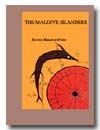Thank
you to those of you from the Maldives who enquired about
that flag I have been displying in my pages, seen above
on the right. The most common query is why I was assigning
a Communist flag to the Maldives. I have been expecting
these queries and had prepared a response. Here it is.
|
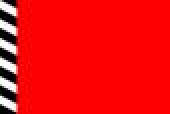
Flag of the Maldives until 1903
|
If
the flag of the Maldive kings from time immemorial were
their connection with
Communism, then Communism originated in the Maldives,
or so one would think. Indeed the Maldive red flag predates
Communism by a long shot. Communism had nothing
to do with the Maldive kings.
The
older flag was a sensible one because, against a blue
background (the ocean) red is the most visible colour.
Flags were originally meant to serve a practical purpose.
They were supposed to be easily seen in forums of war
and other circusmstances.
The
black and white hoist called the dhandimathi was
an extension
of the flagpole. In the olden days some flagpoles were
painted white with a black strip spiralling upwards.
Contrary
to popular belief, the crescent moon had never been an
Islamic symbol.
|
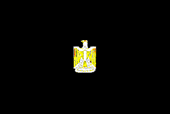
Flag of Qureish

Flag of the Prophet Mohamed
|
Older
Islamic flags were derived from the tribal flags of the
Arabs. The national flag of Qureish, the nation of the
Prophet Mohamed was black, with a rising eagle in the
middle.
The
Prophet found the eagle abhorent and determined that it
was somehow connected with the idols of his forebears.
Accordingly he removed the eagle and used a plain black
flag as the State flag of the first Islamic Commonwealth.
A black flag made enormous sense against the beige backdrop
of the desert.
During
the conflict between the Umayyads and the descendants
of Ali bin Abu Talib, the Prophet's son-in-law, the Umayyads
adopted a plain white flag to draw contrast with the black
flag of the Prophet, which was also used by Ali.
When
Ummayad rule, centred in Damascus, gave way to Abbasid
rule from Baghdad, the flag reverted to the Prophet's
black flag. For a time the Abbasids used a plain green
flag, as did the Fatimids of Egypt. The Umayyads of Europe
used the plain white flag of their Damascus kin.
Flags
of many modern Arab states combine the traditional black
white and green of the Arab dynasties and the red of the
Ottomans. The
eagle of the Qureish was reinstated in the tricolour of
the short-lived Federation of Arab Republics that grouped
Egypt, Libya and Syria. Close to Egypt making peace with
Israel, the federation broke up and Syria reverted to
the flag of a previous union, the United Arab Republic.
Libya adopted the green flag of the Fatimids while Egypt
was left with the eagle tricolour.
|
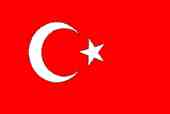
Flag of the Ottoman Empire and Turkey
|
In
the 19th century, the Ottoman Empire (ruled mainly by
Anatolian and Rumelian Turks) carried out a very successful
public relations campaign across the Islamic world to
promote their crescent moon as the symbol of Islam.
The
crescent moon was in fact the symbol of the city of Constantinople
(renamed Istanbul by the Turkish Republic) since pre-Ottoman
times. The Ottoman Sultan Mehmet II adopted the flag of
Constantinople when he conquered the city in 1453 and
extinguished the Byzantine Roman Empire.
Constantinople
was the capital of Eastern Roman or Byzantine Empire.
Before Christ it was once sieged by Goths. The Romans
defeated the Goths on the first of a lunar month. Therefore,
to comemmorate this occasion they added the new moon on
the city flag. According to another version (source: Rafael
Narbaez, Jr.) the crescent was the symbol of Diana
the Roman goddess of the hunt. Constantinople was dedicated
to Diana. The Roman Emperor Constatine rededicated the
city to the Virgin Mary, whose star symbol was added to
the previous crescent.
Having
conquered most of Eastern and Central Europe and lost
much of it, the Ottomans were looking for dominance in
the Islamic world in the East. Eastern Muslims at that
time were looking for an identity in the face of Western
European imperial advances and fell for the Ottomans.
The Arabs were the notable exceptions. They were seeking
independence from Ottoman rule and hegemony and did not
adopt the Ottoman crescent. That is why we don't see the
crescent in most Arab flags even today.
We
still find the crescent moon on the Turkish flag presicely
because it was not an Islamic symbol. In 1923 when the
last caliphate was abolished and Islam was disestablished
in the new Turkish Republic, Mustafa Kemal (also known
as Kemal Atatürk) retained the Ottoman flag arguing
that it was not an Islamic flag- indeed it was the pre-Ottoman
flag of the city of Constantinople, adopted by pre-Christian
Romans. The Turkish Republic banned everything even remotely
connected with Islam from public use. Islam is no longer
the official religion of Turkey and still remains disestablished
there.
Maldivians
fell for the Turkish gimmick in a big way as did many
other peoples. In 1903, the crescent was inserted on a
green field in the middle of the then existing flag. For
a time, only the white crescent appeared, without the
green field and with its horns facing the hoist.
|
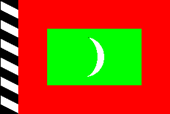
Flag of the Maldives 1903 - 1949
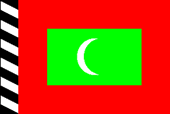
Flag of the Maldives 1949 - 1965
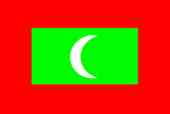
Current Flag of the Maldives
|
Maldivian
designers had little knowledge of how the crescent appeared
in other flags, as it was hastily adopted. So until 1949,
the horns of the crescent faced the hoist (dhandimathi).
It took that long to correct this embarrasing "mistake"
of byzantine proportions and reverse the crescent to face
the fly as it appears today.
It
was in 1965 that the black and white hoist called the
dhandimathi was removed and the present design
adopted. The author of the Maldive national anthem written
over 15 years before overlooked to include black as a
colour of the flag, along with green red and white. Most
people did not regard the dhandimathi as part of
the flag. By 1965, the black was seen as an anomaly in
the flag, rather than an omission from the national anthem.
As a result, the hoist was removed.
The
flag adopted for the Sultan of the Maldives in 1965, displayed
a white five pointed star between the horns of the crescent
in the national flag. The irony is that this symbol was
derived by combining those of the Roman goddess of the
hunt and the Virgin Mary. This flag is still in use in
the Maldives.
|
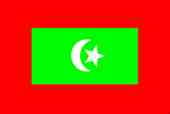
Flag adopted for the Sultan in 1965 displaying the
symbols of the Roman goddess of the hunt and the
Virgin Mary- currently flag of the president of
the republic
|
The
traditional flag of the Maldives is better suited to the
Maldive environment, which is still bounded by the blue
ocean. The green patch tends to drown the flag against
the green palms and trees.
The
crescent was the result
of getting sucked into a Turkish gimmick of Roman origins
anyway.

Secret
of Maldive Name


 rss feed
rss feed 
